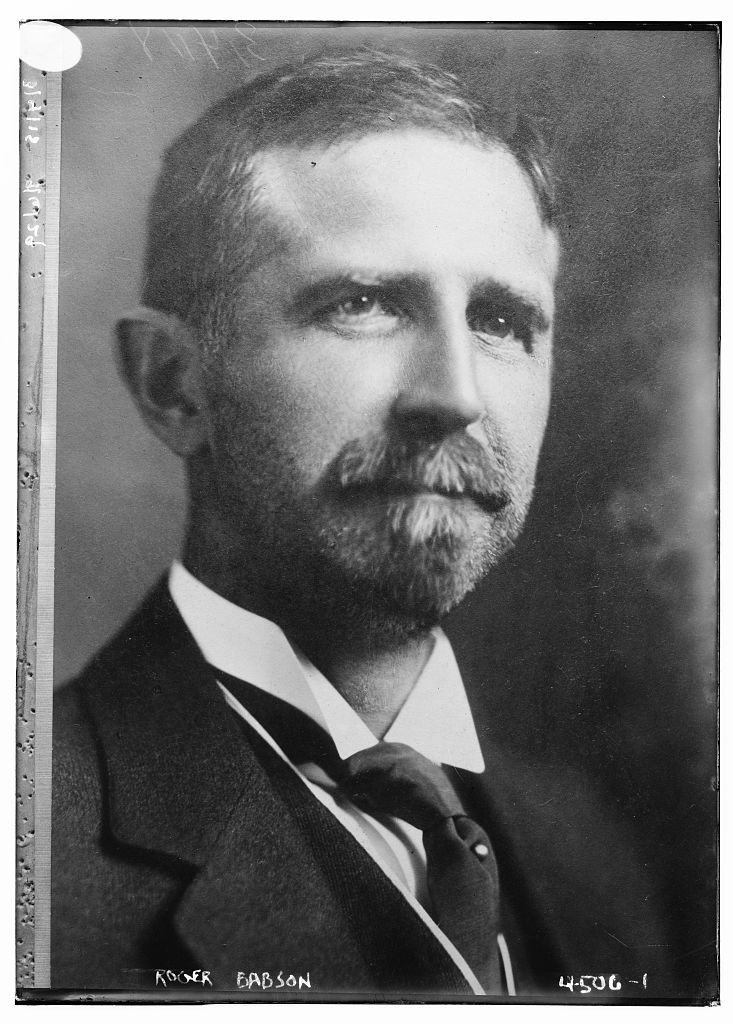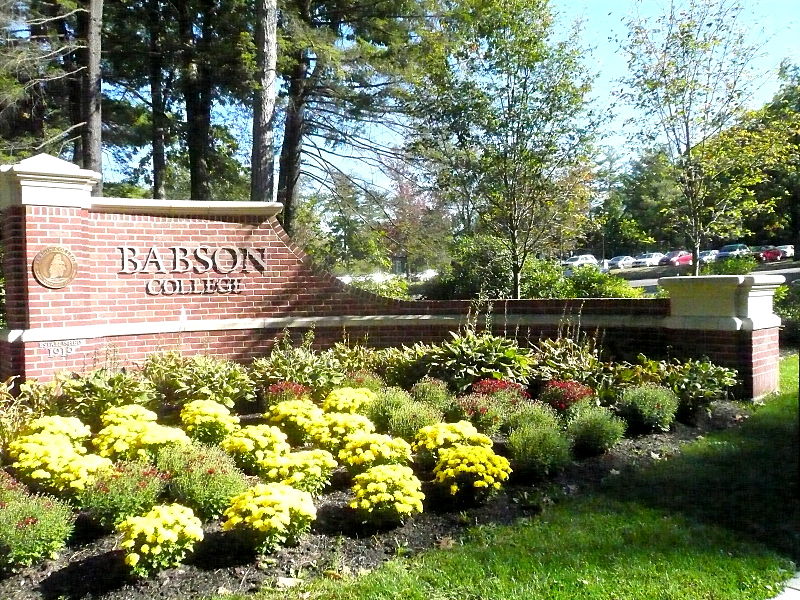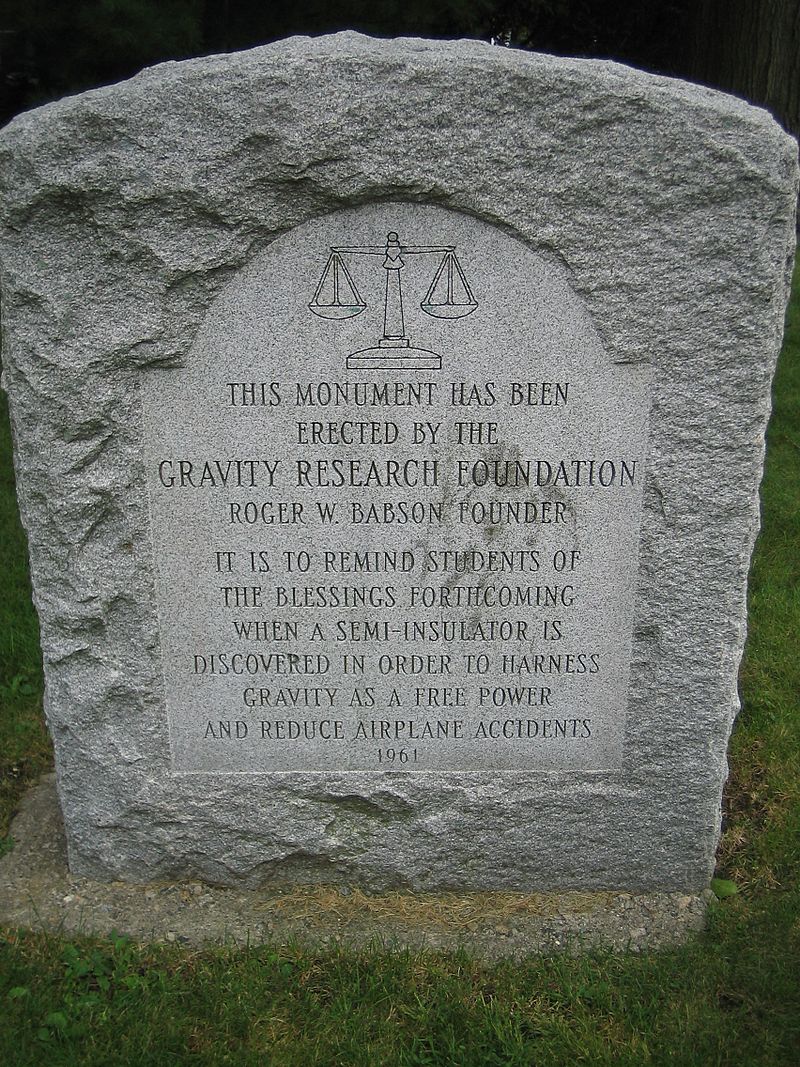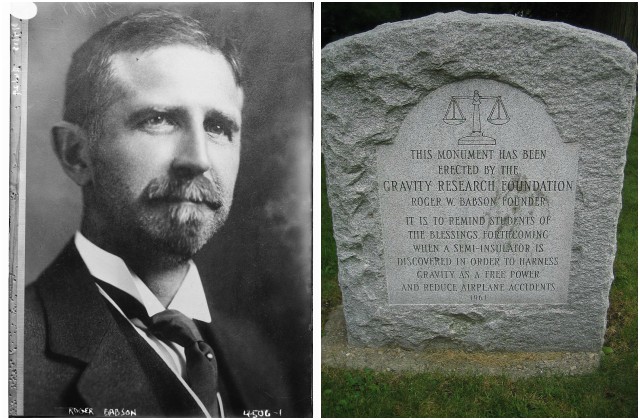Roger Babson was an eccentric businessman, entrepreneur, and economist. Born on July 6, 1875, in Gloucester, Massachusetts, Babson enrolled in the Massachusetts Institute of Technology and earned an engineering degree. He worked for several investment firms before he founded his own statistical reports company called the Babson Statistical Organization, which was one of the few to predict the 1929 stock market crash and within a decade he was a multimillionaire.
In 1919, he founded the Babson Institute that later became Babson College, wrote several books on investing, ran for president against Franklin Roosevelt, wrote columns about business matters for the Saturday Evening Post and the New York Times and advised every president from Teddy Roosevelt to Franklin Roosevelt.

This eccentric businessman had a strange desire: to defeat gravity. He was obsessed with the idea that one day the force of gravity could be overcome, “It seems as if there must be discovered some partial insulator of gravity which could be used to save millions of lives and prevent accidents,” he wrote in the essay “Gravity-Our Enemy Number One”.
He said that his interest in gravity started back in 1893 when his sister, Edith Babson, drowned in a river near Gloucester, Massachusetts. “When I was a boy, my oldest sister was drowned while bathing in Annisquam River, Gloucester. Mass. Yes, they say she was “drowned”, but the fact is that, through temporary paralysis, or some other cause (she was a good swimmer), she was unable to fight Gravity, which came up and seized her like a dragon and brought her to the bottom. There she smothered and died from lack of oxygen”, he wrote in his essay.
In 1947, his grandson, Michael also died by drowning in Lake Winnipesaukee. Babson was 72-years-old when he lost his grandson. He became more and more interested in the subject of gravity and was determined to do everything he could in order to get rid of it.

He wrote in “Gravity-Our Enemy Number One”, “There are thousands of such accidents every summer, notwithstanding the fact that most boats carry life preservers which are practical anti-gravity aids. If these would be more freely used, deaths from drowning would greatly be reduced, but most people–especially good swimmers think it is a sign of weakness or is sissified to use these aids for fighting Gravity. This is a great mistake and should be corrected by all swimming teachers”.

In 1949, he founded the Gravity Research Foundation. A research facility was established in the town of New Boston, New Hampshire, far enough from Boston to survive if the city was hit by a nuclear bomb. The research facility was supposed to develop a system that could shield people and objects from gravity. In order to encourage scientists to research the subject of gravity, Babson created a prestigious annual prize for the best scientific paper on the subject. Stephen Hawking, Freeman Dyson, Roger Penrose and Martin Rees were among the winners throughout the years.
In nearly two decades of active existence of the Gravity Research Foundation, a number of conferences on the subject were organized. The foundation even began awarding “gravity grants” to schools that would allow them to erect a granite marker on each campus. One such example, from Tufts University, that you can see bellow states, “to remind students of the blessings forthcoming when a semi-insulator is discovered in order to harness gravity as a free power and reduce airplane accidents.”

The Gravity Research Foundation gave “gravity grants” and monoliths to 13 colleges and universities.
Roger Babson died in 1967, but The Gravity Research Foundation still exists today and the essay award lives on, offering prizes of up to $4,000.
